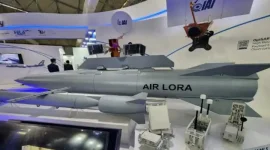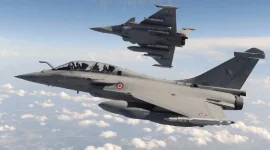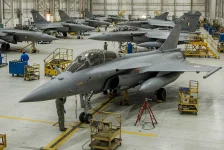- Views: 2K
- Replies: 12
The Indian Air Force (IAF) is expediting the purchase of a large quantity of Israeli-made 'Rampage' precision missiles, following their effective performance in recent cross-border strikes.
Defence sources confirm that the successful use of these weapons during 'Operation Sindoor' in May 2025 has spurred the move to bolster the nation's long-range strike capabilities through a fast-tracked acquisition process.
The decision comes after the missiles, designated as HSLD-Mark 2 (High-Speed Low Drag-Mark 2) in Indian service, were instrumental in 'Operation Sindoor'. The operation, conducted from May 6 to 10, was a retaliatory action following a terrorist attack on tourists in Pahalgam, Kashmir.
Official sources reported that Rampage missiles, launched from Su-30 MKI fighters, precisely destroyed the headquarters of Lashkar-e-Taiba in Muridke and Jaish-e-Mohammed facilities in Bahawalpur, located deep within Pakistan's Punjab province.
Developed by Israel Aerospace Industries (IAI) in partnership with Elbit Systems, the Rampage is an advanced air-to-ground supersonic missile. It is designed to hit high-value, well-protected targets from a stand-off distance of over 250 kilometres.
Its effectiveness comes from a combination of a powerful warhead and a sophisticated navigation system using GPS and inertial guidance, which allows it to operate in all weather conditions and evade enemy air defence systems.
The key strategic advantage offered by the Rampage missile is its stand-off capability. By launching the weapon from well outside the engagement range of enemy surface-to-air missile systems, the IAF can neutralize critical targets without exposing its fighter jets and pilots to significant risk.
The missile is already integrated with the IAF's Su-30 MKI, Jaguar, and MiG-29 fighters, as well as the Indian Navy's MiG-29K fleet. The air force is also exploring its integration with the indigenous Tejas Mk1A fighter to further enhance operational flexibility.
During the coordinated strikes of 'Operation Sindoor', other assets were also deployed alongside the Rampage. This included Rafale jets using SCALP cruise missiles and Mirage 2000 aircraft delivering Spice-2000 precision bombs, demonstrating a multi-platform approach to the deep-strike mission.
This accelerated procurement of the Rampage missile system signals India's strategic priority to enhance its precision long-range firepower.
The move is not only aimed at strengthening the country's military deterrence but also aligns with the national 'Make in India' policy, which encourages domestic defence production and technology transfer.
The successful combat debut of the missile has solidified its place as a critical asset for the Indian armed forces.




